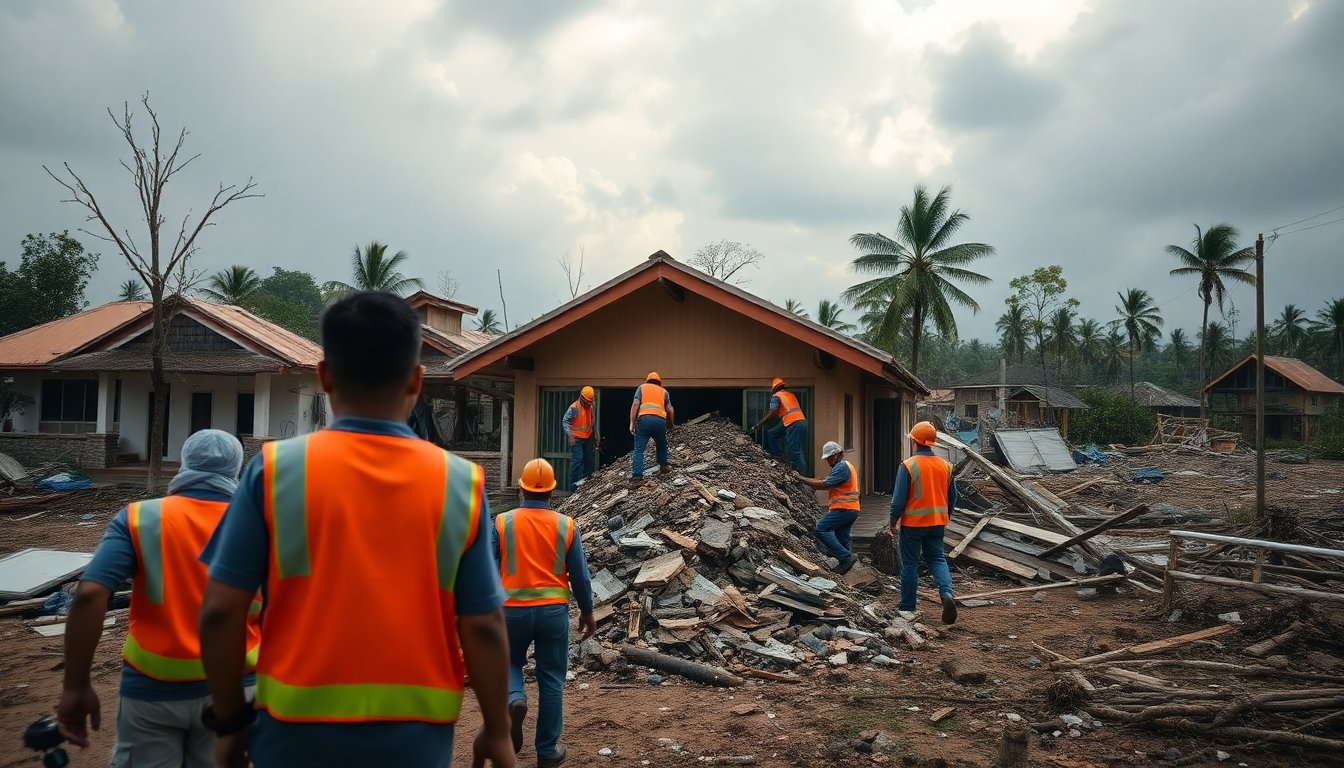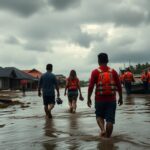Table of Contents
The Philippines is engaged in extensive recovery operations following the devastation caused by typhoon fung-wong. This powerful storm made landfall on the island of Luzon, bringing catastrophic winds and heavy rainfall that resulted in significant loss of life and property.
At least two casualties have been reported, and over 1.4 million individuals have been forced to evacuate as the government mobilizes rescue teams across the affected regions.
As the storm moved away, rescue workers began their efforts on the ground, focusing on clearing debris and assisting those in need.
Thousands of personnel from the Philippine Coast Guard, military, and police have been deployed to aid in recovery efforts. The impact of the storm has left many communities, particularly in the eastern coastal areas, in dire situations.
Damage assessment and ongoing recovery
In the town of Dipaculao, where power outages persist, local emergency crews are navigating through vast amounts of debris. Rescue worker Geofry Parrocha described the challenging conditions, noting that many roads have become impassable due to landslides. “We couldn’t mobilize last night because the rain was heavy and the volume of water was high,” he explained, highlighting the immediate dangers posed by the storm’s aftermath.
The typhoon, with sustained winds reaching 185 kilometers per hour (approximately 115 mph) and gusts up to 230 km/h (143 mph), first struck in Aurora province on Sunday evening. Despite the storm weakening as it moved northwest over the South China Sea, it continued to deliver heavy rainfall across Luzon, with some areas receiving as much as 200mm (8 inches) of rain, according to the local weather bureau PAGASA.
Evacuation and safety measures
In anticipation of the storm, officials urged residents in vulnerable areas to evacuate. More than a million individuals heeded these warnings, seeking shelter as typhoon fung-wong approached. However, the ongoing rains present a continuing threat, especially in northern Luzon, where authorities remain on high alert for potential flooding.
President Ferdinand Marcos Jr. declared a state of emergency as the nation braced for the impact of this storm, which follows closely on the heels of typhoon kalmaegi, another devastating storm that had already left hundreds dead and many more displaced. The government’s response includes not only immediate rescue efforts but also long-term disaster preparedness plans to address such frequent occurrences.
Casualties and community support
The aftermath of the storm has revealed tragic loss of life, with reports indicating at least two fatalities attributed to the storm’s destructive forces. Flash flooding in Catanduanes resulted in one death, while another woman lost her life in eastern Samar when her home collapsed under the pressure of rising waters. Local rescue teams are working tirelessly to locate those still missing and provide assistance to families whose homes have been destroyed.
As communities come together to support one another, almost 320,000 people remain in evacuation shelters. Authorities have announced the closure of schools and many government offices to facilitate recovery and ensure safety for all residents. Furthermore, significant disruptions in transportation have been reported, with hundreds of flights canceled and thousands stranded at ports due to the storm’s impact on maritime operations.
Future outlook and climate considerations
Scientists have increasingly pointed to the influence of climate change in the intensity and frequency of storms like fung-wong and kalmaegi. With the Philippines experiencing an average of 20 typhoons each year, the need for effective disaster response strategies has never been more critical. The government’s focus will not only be on immediate recovery but also on enhancing resilience against future storms.
As the nation works to recover from this latest catastrophe, the stories of those affected highlight the resilience and strength of the Filipino people. With ongoing support and recovery efforts, there is hope for rebuilding and restoring communities devastated by these powerful storms.





